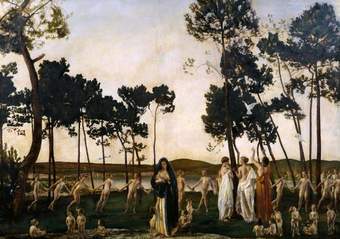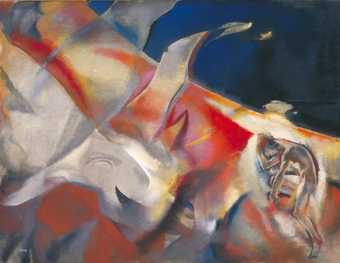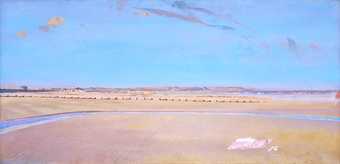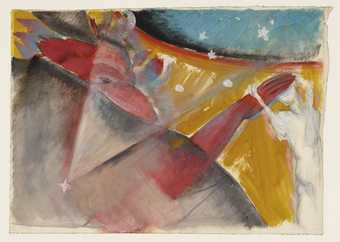Artist biography
Sims was born in Islington, London, the son of a costume manufacturer. He was sent to Paris during 1887-8 to learn commerce, but began full-time art studies at the Royal College of Art in 1890. He also studied at the Académie Julian in Paris in 1891-2, under Benjamin Constant and Jules Lefebre, and at the Royal Academy Schools from 1892 to 1895, where he was awarded the Landseer Scholarship. At first influenced by Orchardson and Bastien-Lepage, his later work shows an interest in Italian quattrocento painting and Puvis de Chavannes. He exhibited at the Royal Academy from 1894. In 1903 he returned to Paris to study briefly under Baschet. His first one-man exhibition was held at the Leicester Galleries, London in 1906. Other exhibitions include one at the Knoedler Galleries, New York in 1926. He was elected an Associate of the Royal Academy in 1908 and a full member in 1915, and was made a member of the Royal Watercolour Society in 1911. He was an Official War Artist in 1918, Keeper of the Royal Academy 1920-6, and a Trustee of the Tate Gallery 1920-7.
In addition to his many society portraits, Sims painted King John Confronted by his Barons for St Stephen's Hall, Westminster in 1924. Just before his death by suicide he painted pictures of a mystical nature, which were initially rejected by the Academy. He was the author of Picture Making: Technique & Inspiration, which was published posthumously by his son Alan Sims with a critical survey of the artist's work and life. He died at St Boswells, Scotland. He was included in the Royal Academy Late Members exhibition of 1933.
Further reading:
Charles Sims, ed. Alan Sims, Picture Making: Technique & Inspiration, London 1934
Harold Speed, 'Charles Sims, R.A.', The Old Water-Colour Society's Club 1928-1929, vol.6, London 1929,
pp.45-66
Terry Riggs
October 1997
Wikipedia entry
Charles Henry Sims (28 January 1873, Islington–13 April 1928, St. Boswells) was a British figurative painter known for his portraits and landscapes. He initially became renowned as a leading Edwardian painter, but following the death of his son in World War I, his work became increasingly idiosyncratic, surreal and controversial. In 1920, he was appointed Keeper, or head, of the Royal Academy Schools, a post he was eventually forced to resign in 1926. At the same time, he became estranged from his wife and children. Sims' final paintings, the Spiritual Ideas, were to some viewers his "most beautiful works," but to others highly disturbing. He committed suicide in 1928.
This biography is from Wikipedia under an Attribution-ShareAlike Creative Commons License. Spotted a problem? Let us know.
Read full Wikipedia entry





